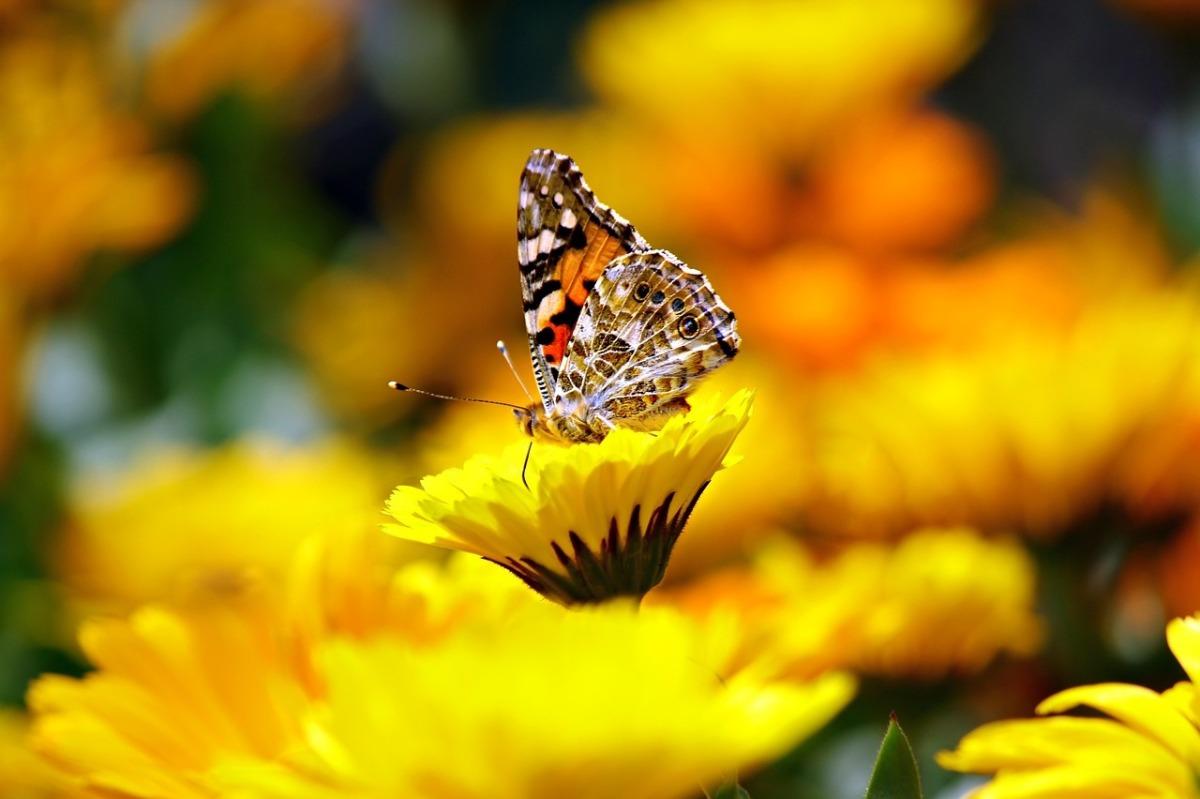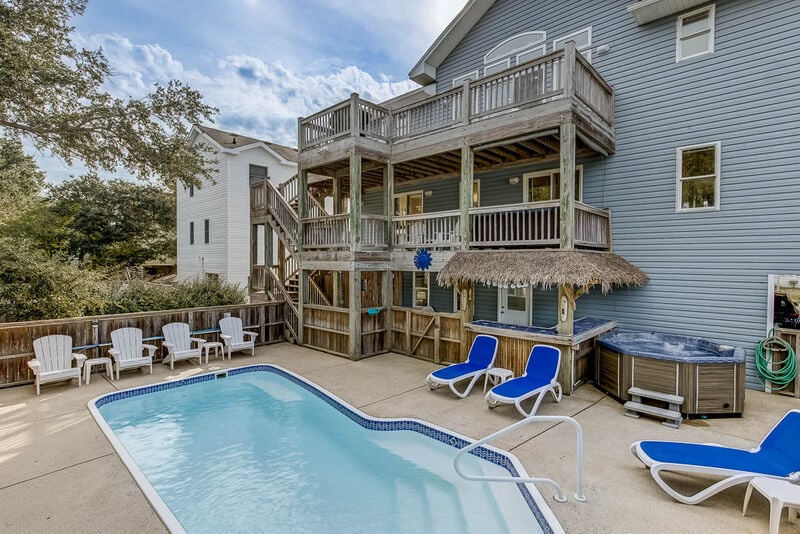
Since its opening in 2022, the Outer Banks Arboretum and Teaching Garden has attracted thousands of visitors to its gorgeous five-acre site in the heart of Kill Devil Hills.
When you visit, you’ll quickly see why. This hidden coastal gem has something for just about everyone, from toddlers to teens, gardeners to grannies, and all other OBX fans who appreciate natural beauty.
Best of all, it’s open year ‘round, from dawn to dusk, free of charge.
So, go ahead. Spend a few leisurely hours in this secluded haven. Stroll along meandering trails – all paved and wheelchair-accessible – through leafy maritime forest and lush flowering shrubbery. Discover whimsical statues depicting Outer Banks wildlife. Relax on quaint stone benches shaded by towering live oaks. And view dramatic displays of colorful native flowers.
Along the way, you’ll get to explore a magical butterfly garden, a fragrant sensory garden, a cluster of grassy dunes, and a kid-friendly turtle pond. And, if you’re here on any Wednesday, you can take advantage of the Arboretum Garden Series, where volunteer master gardeners explain their proven techniques for growing coastal plants.
A Combination of Fun and Learning
Located at 300 Mustian Street, next to the Thomas A. Baum Senior Center, the Outer Banks Arboretum and Teaching Garden was founded by the Dare County Center of the NC Cooperative Extension Service – through its Master Gardener Program – in collaboration with the Dare Master Gardener Volunteer Association. Designed to provide a protected retreat away from the hustle-bustle, this public attraction also offers:
- Horticultural education for gardeners, kids, students, and anyone else interested in coastal plants
- Test gardens showcasing a vast variety of flowering plants and shrubs
- Interactive exhibits spotlighting coastal plants that survive and even thrive in the NC Outer Banks climate, where salt, wind, pests, and heat often take a toll
- A composting demonstration area, helpful for anyone who faces the challenge of gardening in difficult soil
- A special turf exhibit with different kinds of lawn grass – you’ll get to see which one fares best here in coastal Carolina!
- A well-stocked shop where you can purchase your favorite Outer Banks plants
Volunteers are always on hand to answer questions and provide information. And convenient plaques in front of the floral displays clearly show the common and botanical names for every single plant.
Special Sections Offer More to Explore
Seeking an even more in-depth experience of Outer Banks flora and fauna? The arboretum has several areas where you can linger and learn at your leisure.
Love Butterflies? You’ll want to spend some time in the arboretum’s Butterfly Garden. Maintained by the Dunes of Dare Garden Club, this scenic sanctuary is part of North Carolina’s statewide Butterfly Highway, a special program that aims to restore native pollinator habitats. (In other words, it’s designed to bring back bees and butterflies!)
Here you’ll find the vivid flowering plants butterflies adore, such as milkweed, lantana, vinca, pentas, skullcap, and butterfly bush. And, on a warm day, you’ll probably spot some butterflies, too, including exquisite species like Painted Lady, Monarch, and Swallowtail.
Seeking a Sensory Experience? You’ll appreciate the Sensory Garden, with its intoxicating fragrances and varied, tactile textures. Kids and adults alike will love touching and smelling the plants. And children with sensory issues will relish the opportunity to explore sensory inputs in a calming natural setting.
Wondering How Sand Dunes Work? You’ve come to the right place. The arboretum includes a network of living coastal dunes planted with sea oats and other native grasses. These grasses help stabilize the dunes, preventing harmful erosion. You’ll see firsthand how natural vegetation protects the fragile ecosystem. It’s a truly eye-opening experience – and fascinating, too!
Bringing the Kiddos? They’ll have a blast at the pond, where they can swing on the kid-safe swings and hunt for turtles and tadpoles.
365 Days a Year, There’s Always Something Blooming
No matter when you visit, you’ll find vibrant color at the Outer Banks Arboretum and Teaching Garden.
- In winter, look for colorful camellias, flowering quince, and hellebores (Christmas or Lenten Rose).
- In early spring, keep an eye out for bright yellow daffodils, eye-catching redbud blooms, and delicate dogwood blossoms.
- In mid to late spring, watch for showy azaleas – wave after wave of vivid color, with species that bloom at different times from March to the end of April.
- Between late spring and early summer, look for blossoming shrubs like Indian hawthorn and show-stopping flowers like tulips, pansies, and jasmine.
- Throughout summer keep your eyes peeled for heat-tolerant blooms like zinnias, lantanas, gaura, and delosperma.
- In fall, expect brilliant autumnal blossoms – black cherry, swamp rose mallow, blanket flowers, and more.
In all, more than 300 native species thrive at the arboretum, along with several exotic non-natives. It’s a year-round paradise! When finding your Outer Banks vacation rentals, consider a visit to this breathtaking garden for a peaceful retreat amidst the natural beauty of the region.






